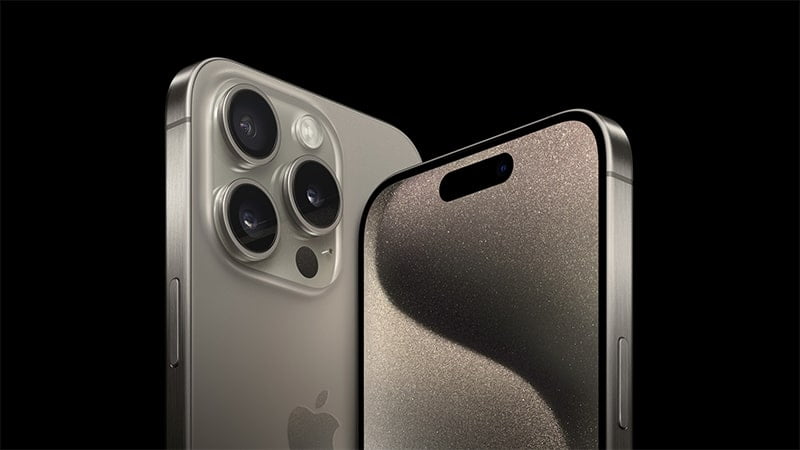
Optimizing an iPhone’s battery life is crucial for users who rely heavily on their devices throughout the day. As iPhones become increasingly powerful, the demand for their batteries can lead to faster drainage. However, users have a variety of strategies at their disposal to ensure their device runs efficiently for as long as possible between charges.
Understanding how certain features and settings impact battery performance is vital to maintaining optimal battery life. Features such as screen brightness and refresh rate directly influence how quickly a battery depletes. Similarly, apps that run in the background or use location services can consume significant power without the user’s active engagement. Users can significantly enhance their iPhone’s endurance by managing these functions thoughtfully.
Understanding iPhone Battery Health
The iPhone’s battery health is a vital aspect to consider when maintaining device performance and longevity. This section breaks down the intricacies of iPhone battery health and what factors come into play.
Factors Affecting Battery Longevity
The battery’s chemistry primarily determines battery longevity in iPhones. Lithium-ion batteries, used in iPhones, degrade over time due to chemical reactions as they charge and discharge. Each complete charge cycle diminishes the battery’s capacity to hold a charge slightly, leading to a reduced lifespan over many cycles. The rate at which this capacity fades can be influenced by factors such as the number of charge cycles, exposure to extreme temperatures, and heavy or irregular charging patterns.
A charge cycle happens when a user uses and charges the battery to 100% of its capacity. However, this does not necessarily mean a single charging session; it can occur for days if the battery is partially charged and then used and charged again.
Interpreting Battery Health Metrics
IPhones provide users with specific metrics to understand their battery health. These metrics are accessible through the device’s settings and give a direct insight into the battery’s current performance levels.
The critical metric provided is the Maximum Capacity, which represents the current charge capacity relative to when the battery was new. A brand-new iPhone should have a maximum capacity of 100%, which decreases over time. Additionally, the software offers a performance management feature that adjusts the ultimate performance capabilities to prevent unexpected shutdowns on devices with a diminished battery capacity.
Battery health also indicates whether a battery can offer peak performance or if it needs to be replaced. A battery is considered degraded and may require replacement if its maximum capacity falls below 80%. Users should monitor these metrics to make informed decisions about battery replacement to maintain optimal device performance.
Settings to Extend Battery Performance
Properly configuring various settings on an iPhone can significantly enhance battery longevity. Users can optimize display settings, manage location and background processing, and utilize Low Power Mode to conserve energy.
Optimizing Screen Brightness and Display Settings
Screen brightness is a substantial factor affecting battery life. Users should adjust their iPhone’s brightness to the lowest comfortable level. Additionally, enabling Auto-Brightness allows the device to adapt to ambient lighting conditions automatically. The implementation of Dark Mode, which uses darker color palettes for backgrounds and interfaces, can also be helpful on OLED displays to save battery life.
Managing Location Services and Background App Refresh
Location services can be a significant drain on battery performance. Users are advised to limit location access only to essential apps. This can be configured in the Privacy section of the Settings by selecting Location Services and then customizing the access for each app.
Background App Refresh permits apps to update content when on Wi-Fi or cellular in the background, which can lead to increased battery use. To improve battery performance, users should consider disabling Background App Refresh entirely or selectively for apps that do not need frequent updates. This setting is found in General -> Background App Refresh.
Exploring Low Power Mode and its Impacts
Low Power Mode is designed to extend battery life when an iPhone reaches 20% charge. It temporarily reduces background activity like downloads and mail fetch, turns off visual effects, and reduces the performance of specific tasks.
This is helpful since you can recognize that your iPhone works to conserve energy, when the yellow battery iPhone icon pops up, indicating that Low Power Mode is active. This mode is essential for prolonging battery life in critical situations, allowing users to continue using their devices without immediate access to a charger.
Users can activate Low Power Mode in the Battery section of the Settings, enabling them to prolong their device’s battery life when they need it the most. This mode can be turned on or off manually and automatically disables itself when the phone is charged to a higher level.
Efficient Use of Connectivity Features
The connectivity features of an iPhone play a significant role in its power consumption. Users can optimize battery life by mindfully managing Wi-Fi, Bluetooth, and cellular connections.
Wi-Fi, Bluetooth, and Airplane Mode Usage
When Wi-Fi is available, using it instead of cellular data can lead to substantial battery savings, as cellular networks generally require more power. Users should connect to Wi-Fi whenever possible, especially for data-intensive tasks such as streaming video or downloading large files. Bluetooth, while convenient for connecting to wireless headphones and other peripherals, consumes power. It is advisable to turn off Bluetooth when it is not in use. Airplane Mode is a helpful feature that turns off wireless communications altogether. Turning it on can save battery life when network connectivity is not needed, but users must remember that it will disconnect all wireless communication, including calls, texts, and Wi-Fi.
Controlling Cellular Data and Airdrop Functions
Managing cellular data is vital to optimizing battery life, especially for users who frequently find themselves in areas with poor cellular reception. Continuously searching for a signal can deplete the battery quickly, so in areas with weak signals, it may be beneficial to limit cellular data usage or turn it off altogether. Users should also be aware of the increased power demands of 5G and consider switching to LTE or a lower data mode when 5G speeds are not essential. Airdrop is a convenient feature for sharing files across Apple devices, but it also uses Bluetooth and Wi-Fi and can impact battery life if left active. Users should ensure that Airdrop is disabled when not actively sharing content.
Maintenance and Software Management
The longevity and performance of an iPhone’s battery hinge on diligent maintenance and proper software management. Users should prioritize staying up-to-date with iOS updates and be mindful of when a battery replacement becomes necessary for optimal device functioning.
Regular Updates and Usage of Apple Features
Apple frequently releases iOS updates that can include critical battery-saving enhancements and resolve bugs affecting battery life. Users can access these updates by navigating to Settings > General > Software Update to see if an update is available. They can then update the device wirelessly or use iTunes on a computer. Taking advantage of native features like Optimized Battery Charging, which learns the user’s charging habits to reduce battery aging, is also crucial. This feature, once enabled, prevents the iPhone from charging above 80% until it predicts the phone will be used, thereby extending the battery’s lifespan.
When to Consider Battery Replacement
As lithium-ion batteries age, their ability to hold a charge diminishes. The iPhone’s battery is designed to retain up to 80% of its original capacity at 500 complete charge cycles under typical conditions. When users experience significantly reduced battery life and their iPhone struggles to last through the day, it may indicate that the battery has reached its lifespan. It is recommended that a professional battery replacement from Apple or an authorized service provider be sought to ensure that the device continues to run efficiently and safely.


